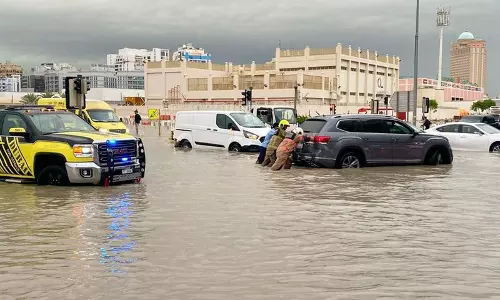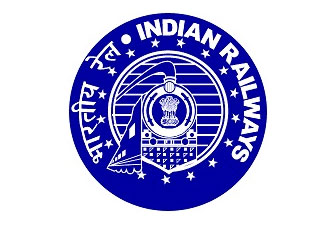
Railways going off the track
text_fieldsWhile actions and investigations remain as mere announcements giving no positive hope to the common man, the dangers lurking in the railway tracks are seeing no end.
At least 39 people were killed and 65 injured when the Jagdalpur-Bhubaneswar Hirakhand Express derailed in Andhra Pradesh's Vizianagaram district Saturday night. As usual, an investigation was launched into the mishap with many doubting sabotage attempt behind the accident. The Railway authorities reiterated that they had not noticed any safety issues until the mishap happened. With frequent accidents, it becomes clearer that the Indian Railways that were once considered a safer and more comfortable transportation system in the country is no longer so. The derailment in Andhra Pradesh is the third big mishap in two months. On 20 November 2016, the Indore-Rajendra Nagar Express (19321), scheduled from Indore to Patna, derailed near Pukhrayan, Kanpur in Uttar Pradesh resulting in at least 150 deaths. Just after a month, fifteen coaches of the Sealdah-Ajmer Express derailed, not so far from Kanpur injuring over 50 persons. As per the data available with the Railway Board, there were 68 such accidents, during last year. And the accident rate has been increasing for the last six years.
 The Commission of Railway Safety (CRS) is yet to submit the preliminary report of its investigation into the Pukhrayan derailment that occurred two months ago. The National Investigation Agency had launched another investigation to probe the ‘sabotage angle’ behind the accident. In the meantime, the Parliamentary Committee had on December 14 submitted the report of its investigation into the frequent train mishaps. The Committee, in the report, pointed towards gross negligence in the safety systems in the Railways. The Committee found that the recent train mishaps occurred due to the lack of maintenance of safety standards of the railway tracks and that the repair works across the country were not being completed on time. As per the law, of the total track length of 1, 14,907 kilometres, 4500 kilometre tracks should be renovated each year. However, the renovation of 5000 kilometre tracks is yet to be completed.
The Commission of Railway Safety (CRS) is yet to submit the preliminary report of its investigation into the Pukhrayan derailment that occurred two months ago. The National Investigation Agency had launched another investigation to probe the ‘sabotage angle’ behind the accident. In the meantime, the Parliamentary Committee had on December 14 submitted the report of its investigation into the frequent train mishaps. The Committee, in the report, pointed towards gross negligence in the safety systems in the Railways. The Committee found that the recent train mishaps occurred due to the lack of maintenance of safety standards of the railway tracks and that the repair works across the country were not being completed on time. As per the law, of the total track length of 1, 14,907 kilometres, 4500 kilometre tracks should be renovated each year. However, the renovation of 5000 kilometre tracks is yet to be completed.
The mistakes on the part of the employees are also equally grave. The Hirakhand Express that was hurtling down at high speed as it crossed the Kuneru station in Andhra Pradesh. The Parliamentary committee had found that over 70 per cent of the rail accidents since 2015 occurred due to human error. The committee condemned the Ministry for its failure in detecting the reasons for the frequent accidents which prevented them from occurring again. Despite the reports by the committee, no further actions are taken in this regard. Despite the numerous criticisms over the human errors, the required number of employees has also not been appointed. The posts of 24 per cent security officials in the eastern coastal areas alone remain vacant. There is a shortage of around 1.42 lakh railway officials in the country. Since numerous posts such as those of Engineers, signal and telecom operators and security officials remain unfilled, the employees complain of having had to work continuously for more than 20 hours. The reports which cited all the above problems went futile.
 The centre has planned safety schemes of Rs 1.27 lakh crore for the next five years with the cooperation of the states and the Central Road Fund (CRF). It amounts to about 15 per cent of the total railway plan allocation. How the money is spent will have to be investigated. Procuring safety equipment or enhancing the technical facilities alone isn’t sufficient. Even though frequent examination of the railway racks with the help of gangmen and safety auditing are present on the paper, they are not implemented properly. Worn out engines, outdated signal systems and inadequate repair works lead to pathetic situations. Instead of expanding the existing tracks, increasing the number of trains along the same route ruin the chances for the necessary patchworks. The instruction to avoid the system of speeding up during the night in order to make up for the time loss since it affects the safety of the tracks, has not been executed so far. The officials claim of frequent examinations in sites of train mishaps. But the defects in the tracks are yet to be found and resolved. Many point fingers towards the possibility of sabotage by the Maoists.
The centre has planned safety schemes of Rs 1.27 lakh crore for the next five years with the cooperation of the states and the Central Road Fund (CRF). It amounts to about 15 per cent of the total railway plan allocation. How the money is spent will have to be investigated. Procuring safety equipment or enhancing the technical facilities alone isn’t sufficient. Even though frequent examination of the railway racks with the help of gangmen and safety auditing are present on the paper, they are not implemented properly. Worn out engines, outdated signal systems and inadequate repair works lead to pathetic situations. Instead of expanding the existing tracks, increasing the number of trains along the same route ruin the chances for the necessary patchworks. The instruction to avoid the system of speeding up during the night in order to make up for the time loss since it affects the safety of the tracks, has not been executed so far. The officials claim of frequent examinations in sites of train mishaps. But the defects in the tracks are yet to be found and resolved. Many point fingers towards the possibility of sabotage by the Maoists.
Did the government ensure the necessary safety measures in these high-risk areas? Instead of taking the precautions to prevent the accidents, the authorities seems to be more interested in saving their face by creating a barrier of analysis and conclusions and launching probes. The first and the foremost move to be taken for saving the railways, is to pull them on to the right track of responsibility and fair governance.























